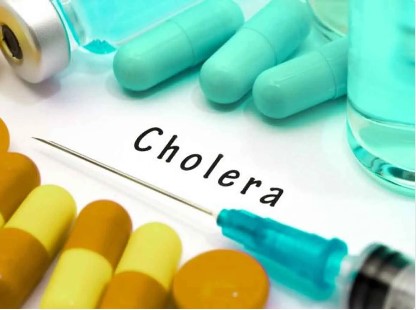Health
US kills Al-Qaeda Leader Al-Zawahiri In Drone Strike
Published
3 years agoon
By
Editor
A United States drone strike killed Al Qaeda chief Ayman al-Zawahiri at a hideout in the Afghan capital, President Joe Biden said Monday, adding “justice had been delivered” to the families of the September 11, 2001 attacks.
In a somber televised address, Biden said he gave the final go-ahead for the high-precision strike that successfully targeted Zawahiri in the Afghan capital over the weekend.
“Justice has been delivered and this terrorist leader is no more,” Biden said, adding that he hoped Zawahiri’s death would bring “closure” to families of the 3,000 people killed in the United States on 9/11.
A senior administration official said Zawahiri was on the balcony of a house in Kabul when he was targeted with two Hellfire missiles, an hour after sunrise on July 31, and that there had been no US boots on the ground in Afghanistan.
“We are not aware of him ever leaving the safe house. We identified Zawahiri on multiple occasions for sustained periods of time on the balcony of where he was ultimately struck,” the official said.
READ ALSO: White House Gives Update On Joe Biden’s State Of Health
According to the official’s account, the president gave his green light for the strike on July 25 — as he was recovering in isolation from Covid-19. Biden said there were no civilian casualties in the operation.
It was the first known over-the-horizon strike by the United States on an Al-Qaeda target in Afghanistan since American forces withdrew from the country on August 31, 2021.
US Secretary of State Antony Blinken said Monday evening that “by hosting and sheltering” Zawahiri, the Taliban had “grossly violated the Doha Agreement” signed in 2020, which paved the way for America’s withdrawal.
Zawahiri, an Egyptian surgeon who grew up in a comfortable Cairo household before turning to violent radicalism, had been on the run for 20 years since the 9/11 attacks.
He took over Al-Qaeda after Osama bin Laden was killed by US special forces in Pakistan in 2011, and had a $25 million US bounty on his head.
Over the weekend the Afghan interior ministry denied reports circulating on social media of a drone strike in Kabul, telling AFP a rocket struck “an empty house” in the capital, causing no casualties.
Early Tuesday in Kabul, however, Taliban spokesman Zabihullah Mujahid tweeted that an “aerial attack” was carried out on a residence in the Sherpur area of the city.
“The nature of the incident was not revealed at first. The security and intelligence agencies of the Islamic Emirate investigated the incident and found in their preliminary investigations that the attack was carried out by American drones,” his tweet said.
The news comes a month before the first anniversary of the final withdrawal of US troops from Afghanistan, leaving the country in the control of the Taliban insurgency that fought Western forces over the preceding two decades.
Under the 2020 Doha deal, the Taliban promised not to allow Afghanistan to be used again as a launchpad for international jihadism, but experts believe the group never broke its ties with Al-Qaeda.
“What we know is that the senior Haqqani Taliban were aware of his presence in Kabul,” the Biden official said.
Taliban interior minister Sirajuddin Haqqani also heads the feared Haqqani Network, a brutal subset of the Taliban blamed for some of the worst violence of the past 20 years and which has been described by US officials as a “veritable arm” of Pakistani intelligence.
– Doctor turned jihadist –
Zawahiri, 71, lacked the potent charisma that helped bin Laden rally jihadists around the world, but willingly channeled his analytical skills into the Al-Qaeda cause.
He was believed to be the main strategist — the real mastermind who steered operations, including the September 11 attacks, as well as bin Laden’s personal doctor.
Saudi Arabia, the home country of bin Laden as well as many of the 9/11 hijackers, welcomed the announcement of Zawahiri’s death.
“Thousands of innocent people of different nationalities and religions, including Saudi citizens, were killed,” by terrorists under his leadership, the Saudi foreign ministry said.
Al-Qaeda is believed to have been degraded in the years since the US invasion of Afghanistan, and the White House official said Zawahiri was “one of the last remaining figures who carried this kind of significance.”
The organization, agreed Soufan Center researcher Colin Clarke, is “at a crossroads.”
“Despite Zawahiri’s leadership, which minimized AQ’s losses while rebuilding, the group still faces serious challenges going forward. For one, there’s the question of who will lead al Qaeda after Zawahiri’s gone,” he said.
Zawahiri’s father was a renowned physician and his grandfather a prayer leader at Cairo’s Al-Azhar institute, the highest authority for Sunni Muslims.
He became involved with Egypt’s radical Muslim community at a young age and published several books which came for many to symbolize the radical Islamist movement.
READ ALSO: Biden Reacts To Assassination Of Ex-Japan Prime Minister, Shinzo Abe
He left Egypt in the mid-1980s, heading for Pakistan’s northwestern city of Peshawar where the resistance to the Soviet occupation of Afghanistan was based.
It was at that time, when thousands of Islamist fighters flooded into Afghanistan during the 1980s, that Zawahiri and bin Laden met, and in 1998 he became one of five signatories to bin Laden’s “fatwa” calling for attacks against Americans.
Jihadist monitor SITE said some militants were questioning the veracity of the report he had been killed, while others believed Zawahiri had achieved his desire of “martyrdom.”
As for Al-Qaeda’s future without him, SITE said jihadists were bullish, with one writing: “If Sheikh Ayman al-Zawahiri is dead, there are a thousand Aymans.”
AFP
You may like
Health
LASG FLags Off Polio Outbreak Response Campaign
Published
6 months agoon
January 20, 2025By
Editor
The Lagos State Government, through the Lagos State Primary Health Care Board, has launched the 2025 Polio Outbreak Response Campaign, reaffirming its commitment to eradicating polio and safeguarding the health of its children.
The ceremony, held at the Simpson Primary Healthcare Centre, was led by the First Lady of Lagos State, Dr. (Mrs.) Claudiana Ibijoke Sanwo-Olu, represented by Mrs. Widad Jumoke Mustafa, a member of the Committee of Wives of Lagos State Officials (COWLSO).
In her address, the First Lady emphasised the state government’s proactive measures to keep Lagos polio-free, highlighting the critical importance of the campaign in preventing the debilitating effects of poliomyelitis, which can result in paralysis or death.
READ ALSO: IMPEACHMENT: Lagos Ex-Speaker, Obasa’s ‘Sins’ Revealed
The First Lady also called on parents, community leaders, and stakeholders to support the campaign by ensuring eligible children are vaccinated.
Targeting children aged 0-59 months, vaccination teams will administer the Oral Polio Vaccine (OPV) to prevent virus transmission.
Dr. Kemi Ogunyemi, the Special Adviser on Health, expressed gratitude to Lagosians for their continued cooperation in the fight against polio. While appreciating all healthcare workers and partners for their services, Mrs. Ogunyemi encouraged parents to present their children and wards for the exercise.
Also speaking, the Chairman of Lagos Mainland Local Government, Mrs. Omolola Rashidat Essien opined that Immunization is key in ensuring that children are kept safe from polio and other vaccine preventable diseases.
Dr. Abimbola Bowale, the Supervising Permanent Secretary, Lagos State Primary Health Care Board, who also spoke at the event, underscored the life-saving importance of immunization.
“All children aged 0-59 months need multiple doses of the polio vaccine to ensure full protection. Any child missed represents a potential risk for the poliovirus to spread. The vaccine is safe, effective, and crucial in keeping our communities polio-free,” he stated.
Dr. Bowale also outlined several strategies to ensure the success of the campaign, including fixed post teams stationed at primary healthcare centres and public health facilities, house-to-house visits, and a transit strategy to reach special locations such as places of worship, schools, motor parks, and other public venues.
The event concluded with Dr. (Mrs.) Claudiana Ibijoke Sanwo-Olu officially launched the campaign, marking a renewed effort to maintain Lagos State’s polio-free status.

The Lagos state suspected cholera cases have risen to 421.
The Commissioner for Health, Akin Abayomi disclosed this on his Instagram handle @profakinabayomi on Saturday.
“As of June 20, 2024, an additional four suspected cholera cases have been reported, as illustrated in the accompanying graph,” he wrote.
He noted that the Emergency Operations Centre in collaboration with all relevant partners is actively engaged in contact tracing, community-based surveillance, awareness campaigns, sample testing, and ensuring that confirmed cholera cases receive appropriate medical treatment.
READ ALSO: Two Suspects Arrested For Stealing Car From Mosque During Juma’at Prayer
On Friday, the commissioner confirmed 35 cases out of the 417 suspected cases and 24 deaths across 20 Local Government Areas in the state.
The cases were reported from Agege, Badagry, Ikeja, Mushin, Ajeromi-Ifelofun, Epe, Ikorodu, Ojo, Alimosho, and Eti-Osa.
Others were Kosofe, Oshodi-Isolo, Amuwo-Odofin, Ibeju-Lekki, Lagos Island, Shomolu, Apapa, Ifako-Ijaiye, Lagos mainland, and Surulere.
Cholera is a food and water-borne disease caused by ingesting the bacteria— Vibrio cholerae — in contaminated water and food. Cholera can cause severe acute watery diarrhoea, and the severe forms of the disease can kill within hours if left untreated.
In Nigeria, cholera is an endemic and seasonal disease, occurring annually mostly during the rainy season and more frequently in areas with poor sanitation.
READ ALSO: Police Arrest 28yr Old Suspected Cultists, Recover Gun In Delta Community
The World Health Organisation on Thursday announced a spike in cholera in several regions of the world, with almost 195,000 cases and over 1,900 deaths reported in 24 countries since the start of 2024.
WHO said the Eastern Mediterranean Region reported the highest number of cases, followed by the African Region, the Region of the Americas, the Southeast Asia Region, and the European Region.
The global health body, however, noted that there are no reported cases in the Western Region, according to its bulletin released on Wednesday.
It said it exhausted its global stockpile of Oral Cholera Vaccines by March but was able to exceed “the emergency target of five million doses in early June for the first time in 2024.”

By Silver Yeibake
Autism, commonly known as Autism Spectrum Disorder (ASD), is a neurodevelopmental disorder that affects communication, social interaction, and behavior. Autism is referred to as a spectrum condition since it can manifest in a variety of symptoms and abilities. While the actual cause of autism is unknown, evidence suggests that genetic and environmental factors interact to influence its development.
The risk factors include a sibling with autism, advanced age of parents, exposure to certain air pollutants and pesticides before birth, extreme prematurity, mothers with diabetes, immune system disorders or obesity, any difficulty with delivery leading to deprivation of oxygen to the baby’s brain, fever during pregnancy, lack of certain vitamins minerals during pregnancy, and certain genetic conditions, such as Down, fragile X, and Rett syndromes.
“Risk factors can not on their own cause a disease. However, they can increase the likelihood of that disease in a person.”
It is important to know that contrary to trending claims online, there is no scientific or medical evidence that vaccines or consumption of sugar are risk factors for autism.
READ ALSO: Kidney Stones: What You Need To Know
Autism is defined by difficulties in social interaction and communication. Individuals with autism may struggle to grasp social cues, maintain eye contact, and engage in typical back-and-forth conversations. Some people may also engage in meaningless, repetitive actions, such as hand-flapping or rocking, and have strong interests in specific areas.
It is essential to remember that autism is a lifelong diagnosis, but with early intervention and adequate care, people with autism can live fulfilling lives.
Autism treatment frequently includes behavioral therapy, speech therapy, occupational therapy, and social skills training. Each individual with autism is unique, thus interventions should be tailored to meet their personal needs and strengths.
In spite of the difficulties that autism can cause, many people with autism possess unique talents and abilities. Some people may succeed in fields such as music, art, mathematics, or programming, thus it is important for society to acknowledge and honor the qualities and achievements of people with autism.
In summary, autism is a complicated and diverse disorder that affects individuals in various ways. By raising autism knowledge, understanding, and acceptance, we can build a more inclusive society in which people with autism can thrive and attain their full potential.
Dr. Yeibake, Weriwoyingipre Silver.
Senior Registrar,
Faculty Of Pediatrics,
WACP
- Top 5 Richest African Immigrants In US
- ‘This Is Why I Hate London’, Ivan Toney Fumes After His Car Is Broken Into
- Community Violations: TikTok Removes Over 3.6m Videos in Nigeria
- Buhari Buried In Daura Amid Prayers, Tributes
- ‘Chelsea Lifted Duplicate Club World Cup Trophy After Trump Kept Real One’
- Guinea-Bissau President, Niger Republic PM, Others Attend Buhari’s Burial In Daura
- VIDEO/PHOTOS: Moment Buhari’s Remains Arrived In Nigeria
- Naira Rises In Parallel Market
- Four Dead As 3-storey Building Collapses In Kano
- Gunmen kill community leader in Bayelsa
About Us
Trending

 Metro4 days ago
Metro4 days agoJUST IN: Psychiatric Hospital Staff Shot Dead In Benin

 News3 days ago
News3 days agoFirst Female Lawyer In Mid-West Region Is Dead

 Metro3 days ago
Metro3 days agoMy Husband Grabs, Squeezes My Breasts Any Time He Wants Sex — Wife

 News3 days ago
News3 days agoWhat May Change As Lagos Tenancy Bill Passes Second Reading

 News2 days ago
News2 days agoList Of 46 Proposed New States Submitted To House Of Reps

 News3 days ago
News3 days agoDelta Community King Joins His Ancestors

 Metro3 days ago
Metro3 days agoEdo: 12-year-old Girl Killed, 14 Rescued As Police, Vigilantes Battle Kidnappers

 Metro4 days ago
Metro4 days agoPastor Arraigned Over Alleged Rape Of Married Woman In Edo

 News5 days ago
News5 days agoSenate Replaces Natasha As Committee Chairman

 Metro3 days ago
Metro3 days agoMy Wife Is Promiscuous, Sleeps With My Close Friend — Husband

















